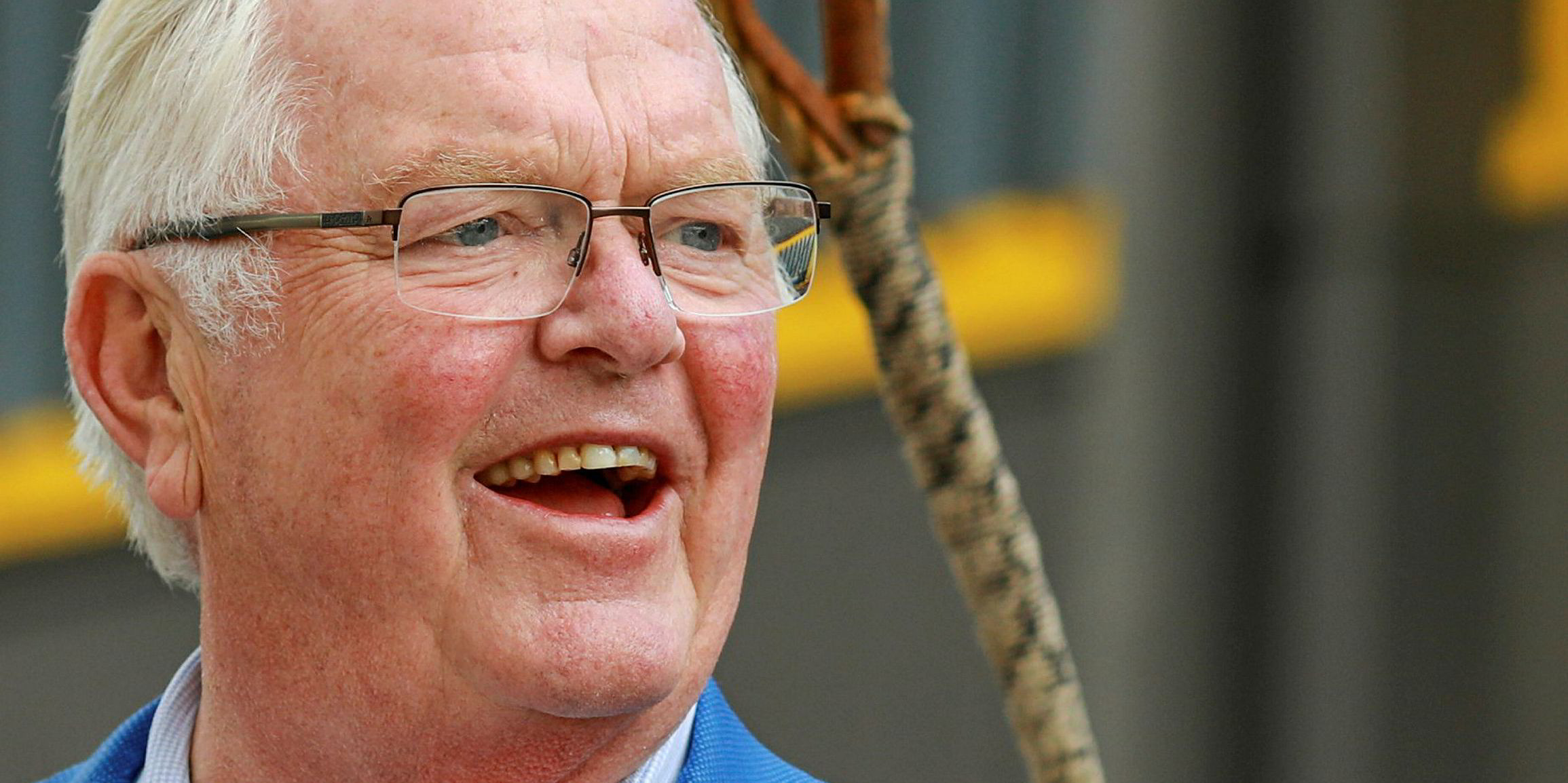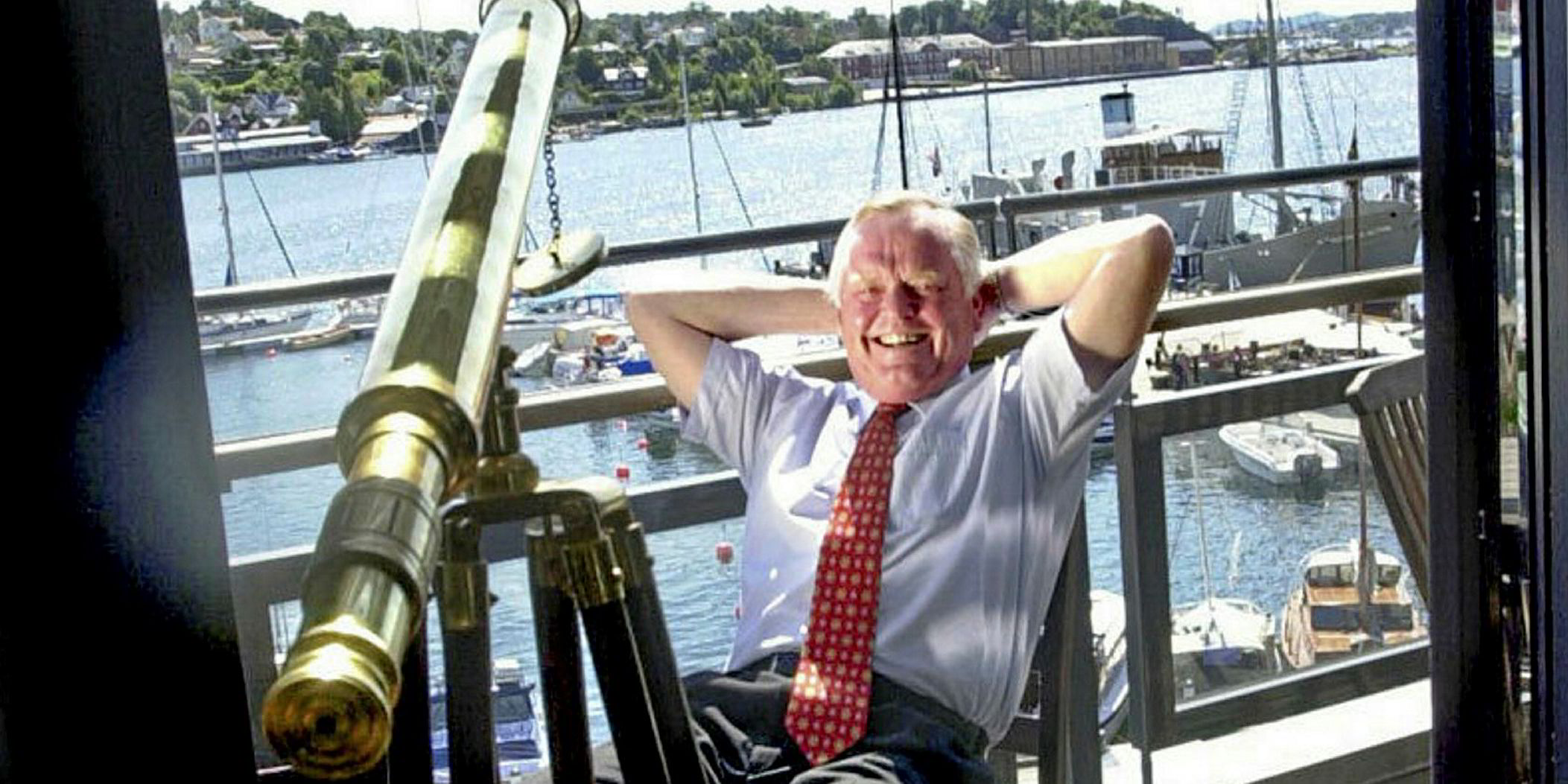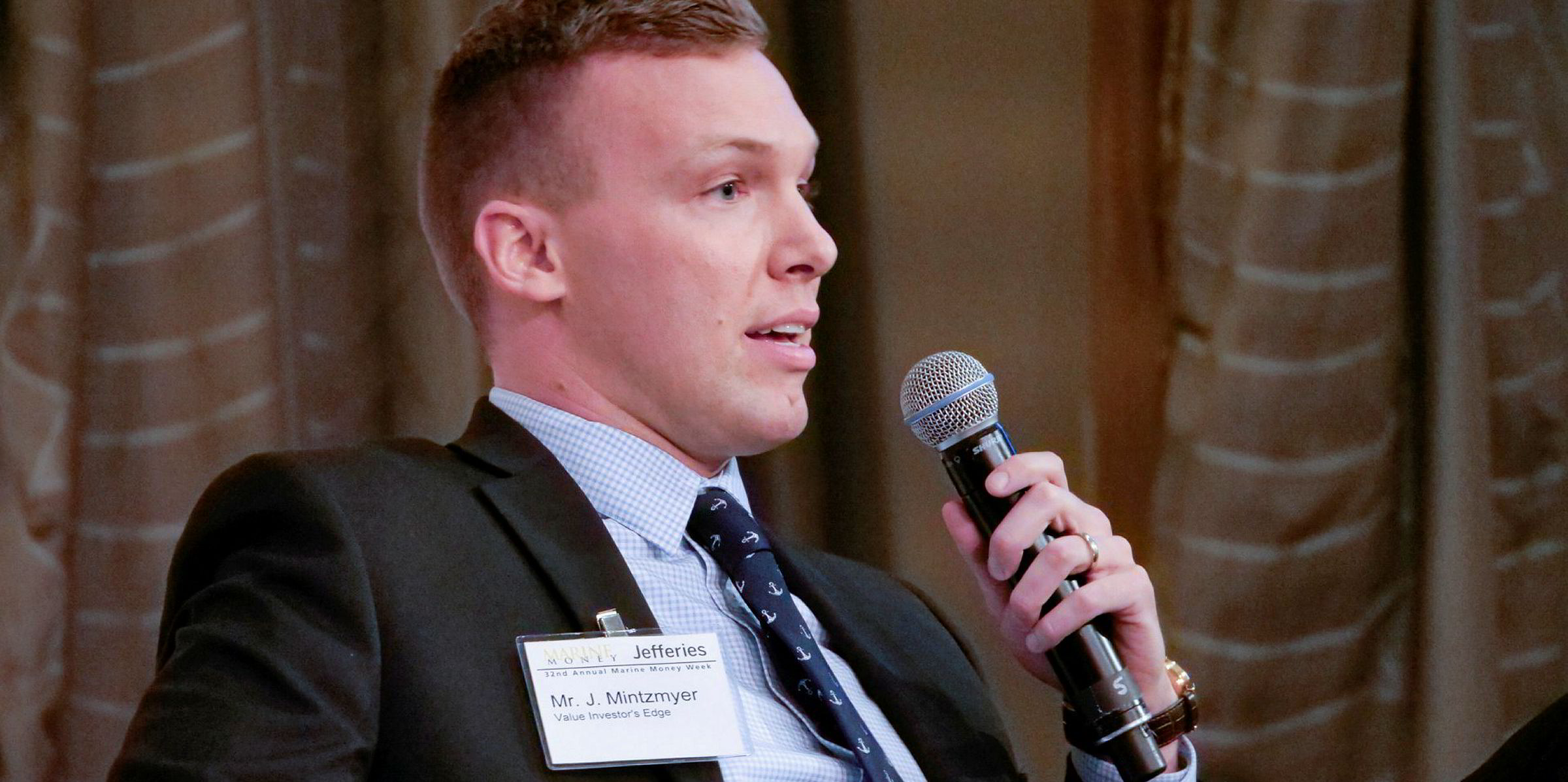It’s a rare thing for Nordic American Tankers (NAT) and irrepressible founder Herbjorn Hansson to schedule an earnings call and take questions from equity analysts, as most other public companies do every quarter.
Then again, when Hansson does step from the shadows, it’s always a doozy. And it may be the analysts who are in need of a breather when the 72-year-old Norwegian is done with his tutorials on maritime economics.
What did we learn from Wednesday’s 73-minute session with the idiosyncratic professor from Sandefjord?
Hansson has little use for scrubbers or Scandinavian bankers.
Hansson wants to watch others blunder into the next system of vessel propulsion and learn from their errors.
And NAT is in the best shape Hansson has ever seen it. Now the chairman and chief executive is ready to eliminate debt, pay dividends and renew the fleet — all in the next few years.
Oh, and about those analyst questions.
Jonathan Chappell of Evercore, Omar Nokta of Clarksons Platou Securities and Randy Giveans of Jefferies may get to ask them, but Hansson doesn’t exactly answer them.
Chappell in particular has been a long-standing NAT critic.
So it was without much warmth that Hansson observed he’d known the analyst since 2005: “You’ve been wrong so long maybe you will continue on this path.”
“It’s so fun,” Chappell replied drily.
Surprise

The analyst went on to pry: NAT had provided guidance on strong second-quarter bookings at its first-quarter earnings, but had failed to repeat the practice recently for third-quarter fixtures, which are presumed to be substantially weaker.
What was NAT actually earning?
“We are probably in the region of $30,000 a day,” Hansson offered, before lowering the estimate to between $25,000 and $30,000.
Chappell expressed surprise, noting that brokers had current rates “in the teens”. Were there above-market charters involved?
“Yes, we have done that — we had a few ships sitting as storage,” the owner replied, before imparting some trademark Hanssonian wisdom: "What is down comes up, and what is up comes down.”
Chappell ploughed on, wondering how Hansson intends to pay down debt, pay dividends and renew a fleet with an average age of 12 years, all within the next three years. Are dilutive equity raises in the works?
After some remarks about pirates and the Strait of Hormuz, Hansson wandered back to the subject.
Curb your enthusiasm
“Dividend is a priority,” he said. “To issue stock is not at all a priority. We are always looking around the next corner and looking for a better market. Shipowners are overly optimistic. We try to curtail our optimism. I have a lot of cash in this company, and I cannot afford to go bankrupt.”
Giveans was actually the first analyst to engage Hansson, or was it the other way?
Although the Houston-based researcher doesn’t have as long a history with NAT as Chappell, it didn’t take Giveans long to get on Hansson’s bad side with a question about paying a dividend from expected “negative net income” in the current quarter.
“I would courageously ask you how many suezmaxes do you have,” shot back Hansson, who has 23.
Giveans pressed on, asking exactly how NAT determines the size of the dividend. Is it based on cash flow? What is the ratio, what is the formula?
Hansson has paid 92 consecutive quarterly dividends, a feature that has made NAT the darling of the retail investment community. But he wasn't giving away any secrets to the nosy analyst.
“2020 will be a good year for NAT and for shipping. 2021 will be a good year for the tanker business. A company can go up, go sideways or go down. This company is going up.
“If you will come to my office, I shall give you a speech in economics and we can spend one hour together. It is a risk management question. You cannot take a percentage, that’s not how business works.”
'We will be conservative'

Giveans made one more stab, referencing NAT’s $370m in total debt, provoking Hansson to challenge the figure, saying NAT’s net debt was $11m per ship.
NAT chief financial officer Bjorn Giaever spoke up, saying Giveans’ and Hansson’s figures were accurate.
Giveans said his point was not to paint NAT as highly leveraged — in fact it’s the opposite at some 25% net debt — but to ask whether it would consider putting more leverage on the fleet, perhaps with cheaper loans from European lenders.
“I said earlier we are finished with Scandinavian banks — the answer is ‘no’,” Hansson said, leaving unanswered which side of that relationship had been finished with the other first.
Nokta stepped to the floor with an aside to Giveans — “Randy, I hope you’re wearing a mouthguard” — and asked about fleet expansion and renewal.
“We will be conservative,” Hansson replied. “Almost every day, people are knocking on our door asking us to buy ships from them. We sit back in a small town outside Oslo. Nobody sees what we are doing.”
One thing he made clear is that NAT won’t be leading the way into the next propulsion technology for newbuildings, be it LNG or something else.
“We are not waving a big technological flag,” he said.
“We do not go first. Always we like others to go first. And that is a very cynical approach. We simply would like others to do the mistakes.”
As he signed off on the conference, Hansson was told that 126 listeners had joined the call, a number that seemed to please him.
“If you feel I said something wrong, send me a note and don’t be too hard on me. We try to do our best,” he said.








